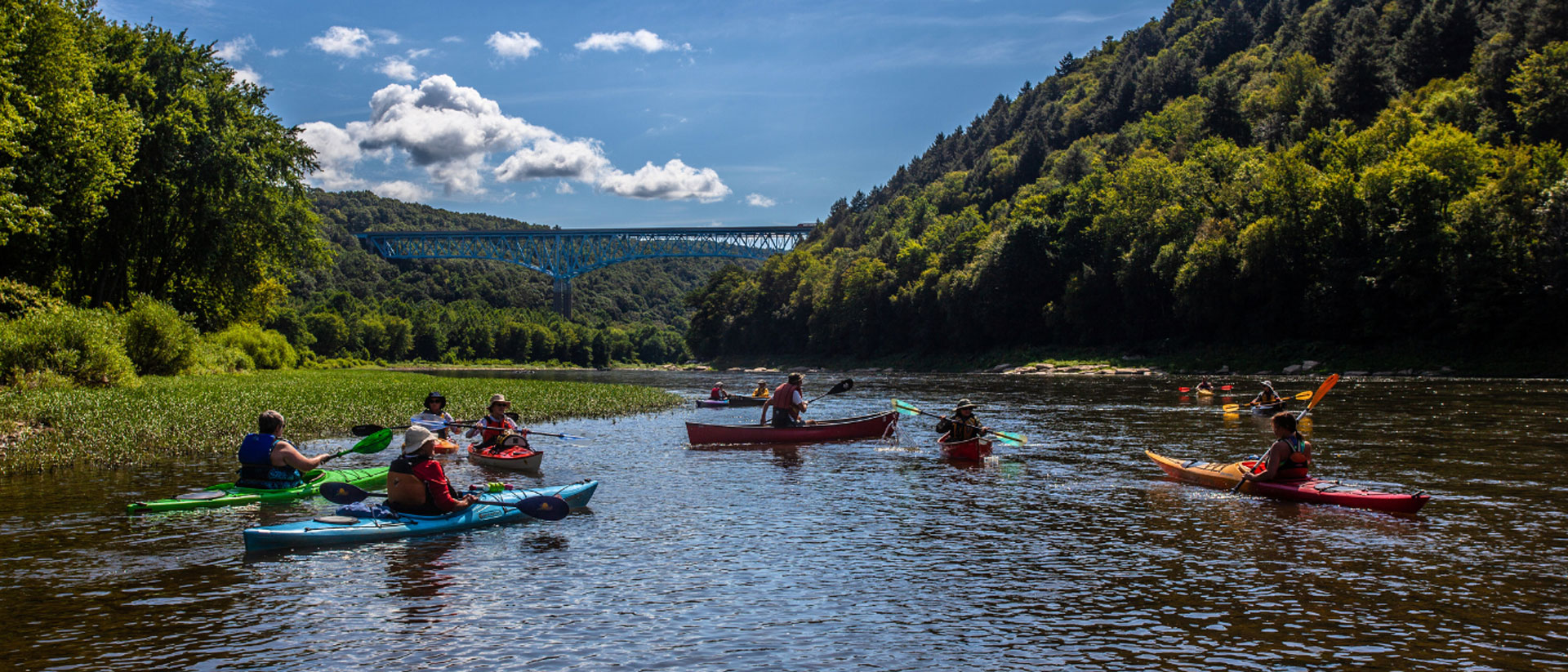Deep in the breathtaking beauty of northwestern Pennsylvania, discover “the Valley that Changed the world.” This is the federally designated Oil Region National Heritage Area, encompassing Venango County and eastern Crawford County, including the communities of Titusville, Oil City, Franklin, and Emlenton.
The first commercially successful oil well was drilled here, launching an oil boom that transformed this rural area into the epicenter of the petroleum industry.
The past is present here, with impressive architecture, oilfield relics, and stories of innovation, perseverance, and fortunes won and lost. The rich history combines with a variety of incredible outdoor recreation opportunities and vibrant local arts creating a place you should experience.
Start your journey where it all began: Drake Well Museum and Park, a 240-acre site including the original oil well drilled in 1859 and exhibits encompassing more than 150 years of history.
Visit Historic Pithole City. A diorama depicts life in the heyday of this 1860s oil boomtown that rose to a population of 15,000 and vanished within 500 days.

The Oil Creek and Titusville Railroad departs from Perry Street Station, taking riders through the history and scenery of the valley.
The nearby Titusville Iron Works was the first machine shop to exclusively manufacture equipment for the oil industry. The 1860 factory is now home to the Titusville Iron Works Tap House, a venue with live music, drinks, outdoor dining, and industrial exhibits reflecting the location’s past.
Wildcat Mansion, just outside of Franklin, was the elaborate home of an oil baron and overlooks the site of Lincoln assassin John Wilks Booth’s failed oil well. Today, guests can spend the night surrounded by the lavish architecture, participate in arts-based programming, and access the area’s trails and waterways.
The Allegheny River offers excellent small- and large-mouth bass fishing, in addition to a variety of boating options. Oil Creek is known for first-class fly-fishing. French Creek, the 2022 PA River of the Year, has extensive biodiversity.
Cyclists will find more than 70 miles of paved rail trails, such as Sandy Creek Trail, Allegheny River Trail, and the Oil Creek State Park trail. Two of the world’s longest rail trail tunnels and several bridges with incredible views can be found on these routes. They also make up some of the most continuous segments of the Erie to Pittsburgh Trail, a system that is still in development, but will one day connect Erie’s Bayfront with Point Park in Pittsburgh via an approximately 270-mile course.
Hundreds more miles of hiking, mountain biking, and equestrian trails are enjoyed year-round as well.
The Oil Region’s extensive network of back roads are a favorite of motorcyclists and gravel bike riders including the contestants in the annual Roughneck Gravel Roubaix.
Warm weather brings festival season with free outdoor concerts, art exhibits, and unusual competitions such as the Rock in River Stone Skipping Championship, a leg of the International Bowhunting Organization’s Triple Crown, and numerous trail races.
Request a free guide to the Oil Region National Heritage Area to start planning your trip.
